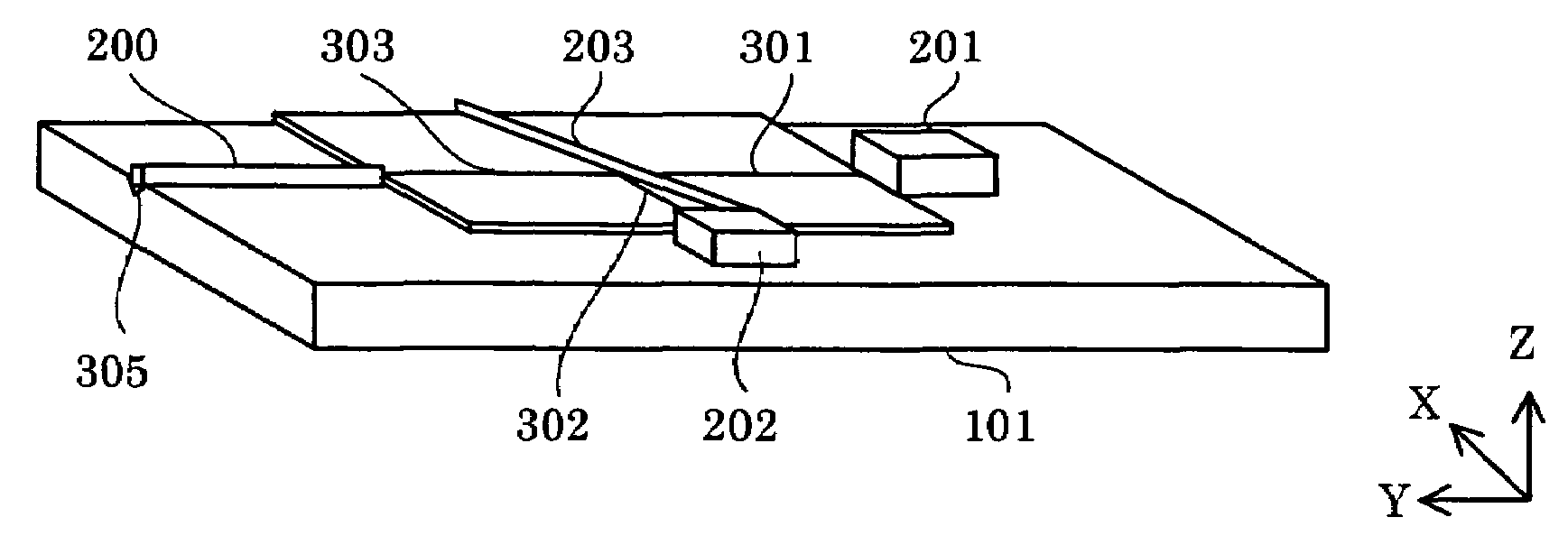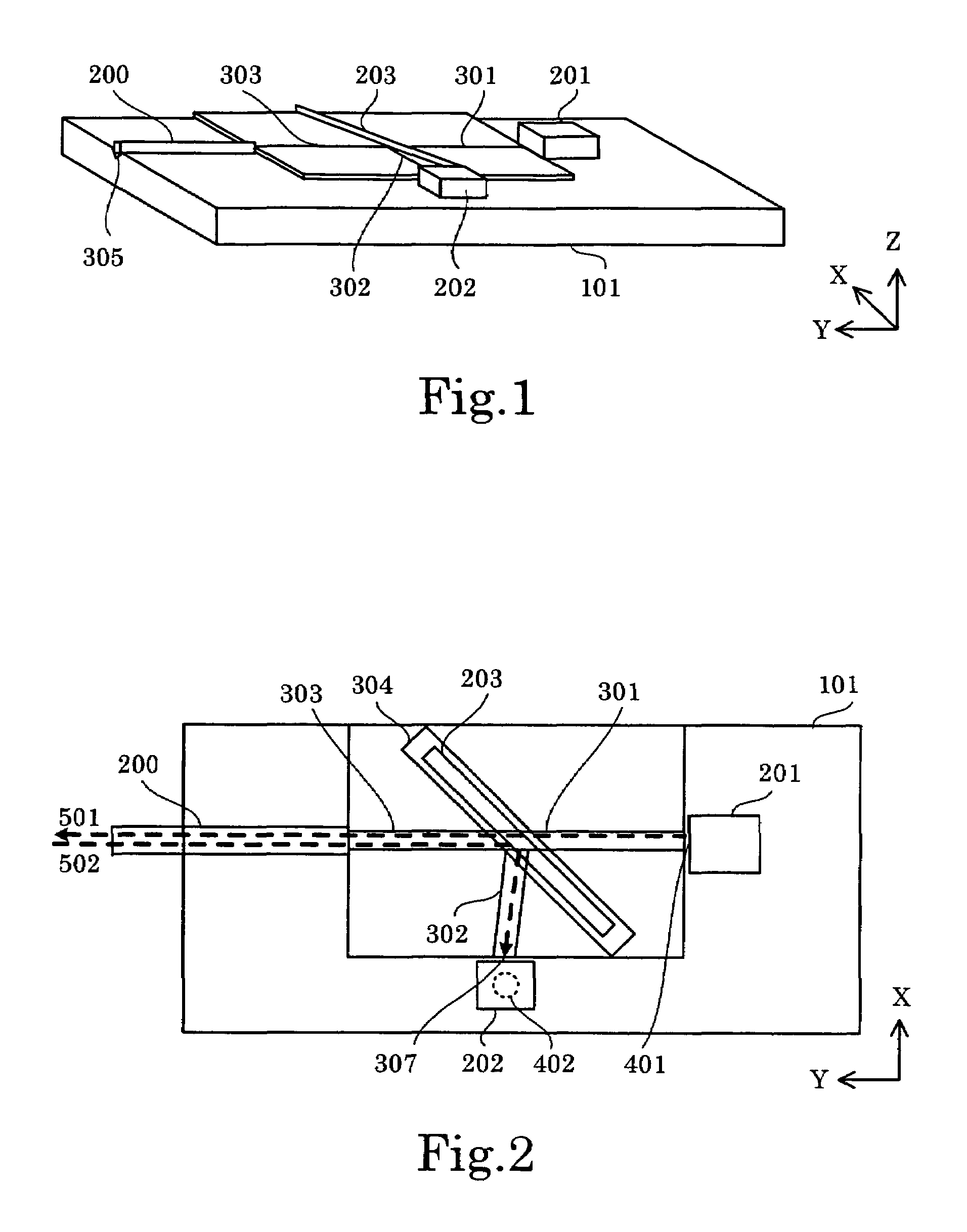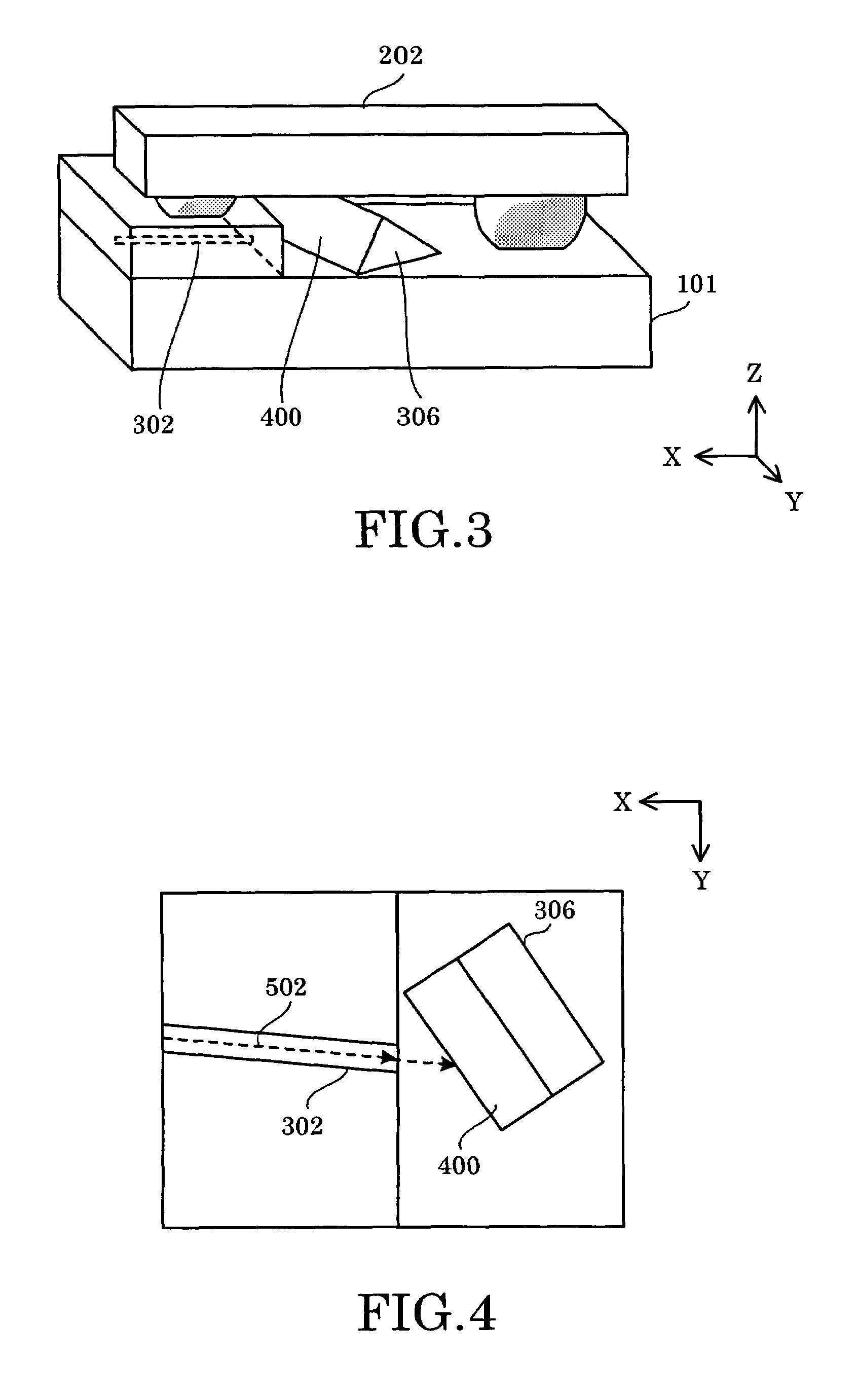Optical module
a technology of optical modules and optical fibers, applied in the field of optical modules, can solve the problems of limiting miniaturization, affecting communication, and increasing costs, and achieve the effect of greatly reducing the error of interference from signals emitted by local stations
- Summary
- Abstract
- Description
- Claims
- Application Information
AI Technical Summary
Benefits of technology
Problems solved by technology
Method used
Image
Examples
first embodiment
[0036]FIG. 1 through FIG. 4 illustrate the configuration of an optical module used in the present invention, with FIG. 1 showing a perspective view, FIG. 2 a plan view, FIG. 3 an enlarged view of the vicinity of the light-receiving element, and FIG. 4 a plan view of the vicinity of said portion without the light-receiving element.
[0037]The optical module comprises light-emitting element 201, transmitting optical waveguide 301 optically coupled to light-emitting element 201, light-receiving element 202, and receiving optical waveguide 302 guiding optical signals to light-receiving element 202, all of which are located on optical waveguide substrate 101, and furthermore, comprises transceiving optical waveguide 303 with optical fiber 200 optically coupled thereto and, as optical multiplexing / de-multiplexing means for outputting transmitted optical signals from transmitting optical waveguide 301 to transceiving optical waveguide 303 and guiding received optical signals coming in from t...
third embodiment
[0059]FIG. 8 is a plan view explaining the configuration of the optical module used in the present invention, FIG. 9 is an enlarged perspective view of optical path converter 306 and its periphery, and FIG. 10 is an enlarged plan view of optical path converter 306 and its periphery without light-receiving element 202. In this embodiment, a groove is formed in a portion of receiving optical waveguide 302 and the surface facing end face 307 of receiving optical waveguide 302 is machined into an inclined surface. A material of superior reflectance, e.g. gold, is deposited over a portion or all of the inclined surface in order to use its reflection as optical path converter 306. At such time gold is preferable as the metal deposited on the inclined surface. The reason for this is the ability to simultaneously form the electrical wiring of light-receiving element 202 and light-emitting element 201.
[0060]FIG. 11 is a perspective view illustrating the configuration of the optical module us...
PUM
 Login to View More
Login to View More Abstract
Description
Claims
Application Information
 Login to View More
Login to View More - R&D
- Intellectual Property
- Life Sciences
- Materials
- Tech Scout
- Unparalleled Data Quality
- Higher Quality Content
- 60% Fewer Hallucinations
Browse by: Latest US Patents, China's latest patents, Technical Efficacy Thesaurus, Application Domain, Technology Topic, Popular Technical Reports.
© 2025 PatSnap. All rights reserved.Legal|Privacy policy|Modern Slavery Act Transparency Statement|Sitemap|About US| Contact US: help@patsnap.com



